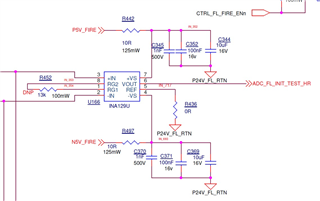Tool/software:
We are encountering an issue with the INA129U components received in our most recent order.
When assembled in our circuit, these components draw approximately 0.2 mA of supply current.
In contrast, INA129U components from previous orders, when mounted on the same circuit and the exact same PCB, consistently draw only 0.05 mA under identical operating conditions.
We have been using the INA129U for over five years in this exact application, on the same PCB and circuit configuration. Only the components from the most recent batch exhibit an increased supply current of ~2 mA. This deviation causes our product to fail under standard operating conditions.
Please find the application schematic attached.
Best regards.


